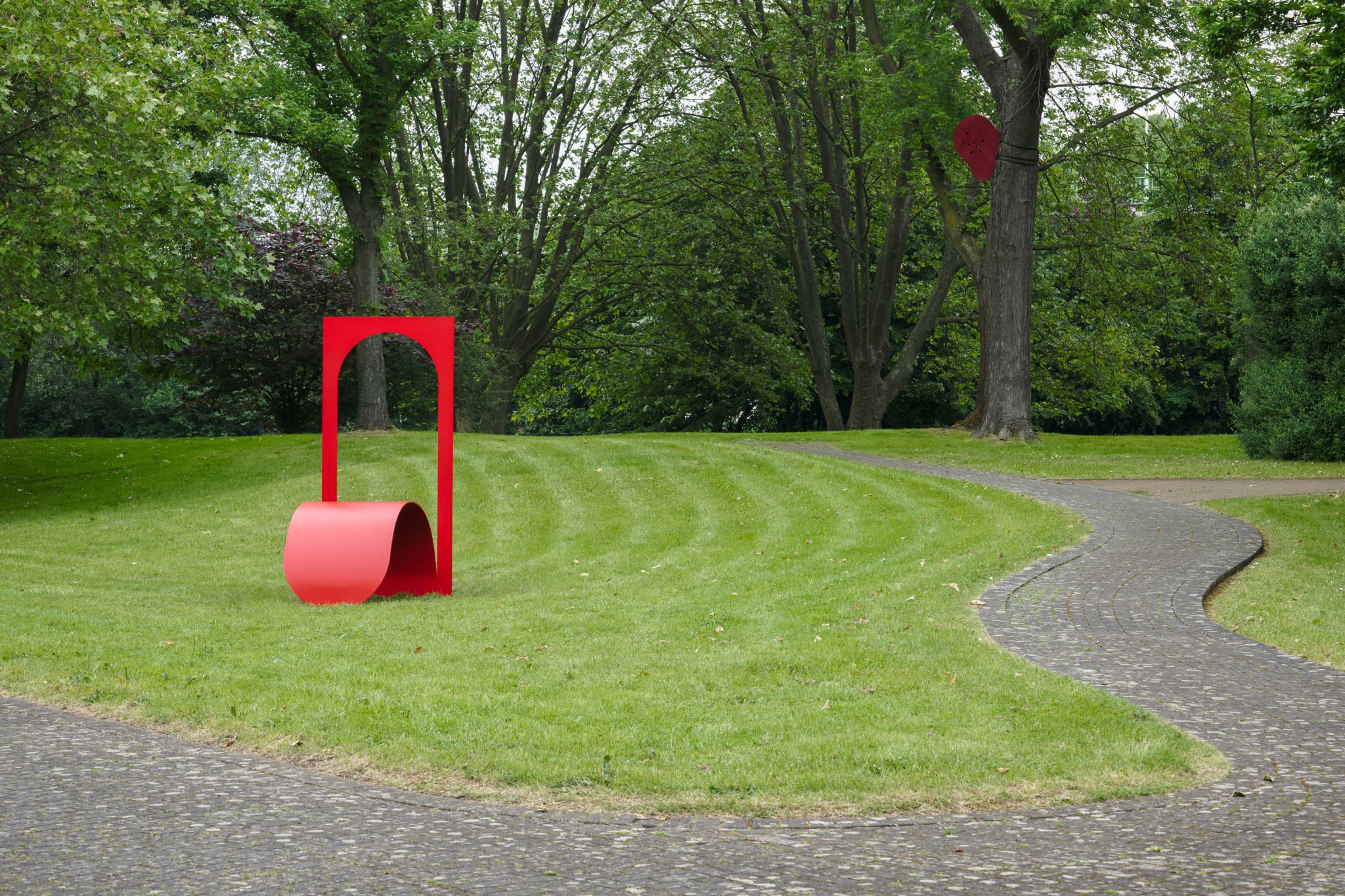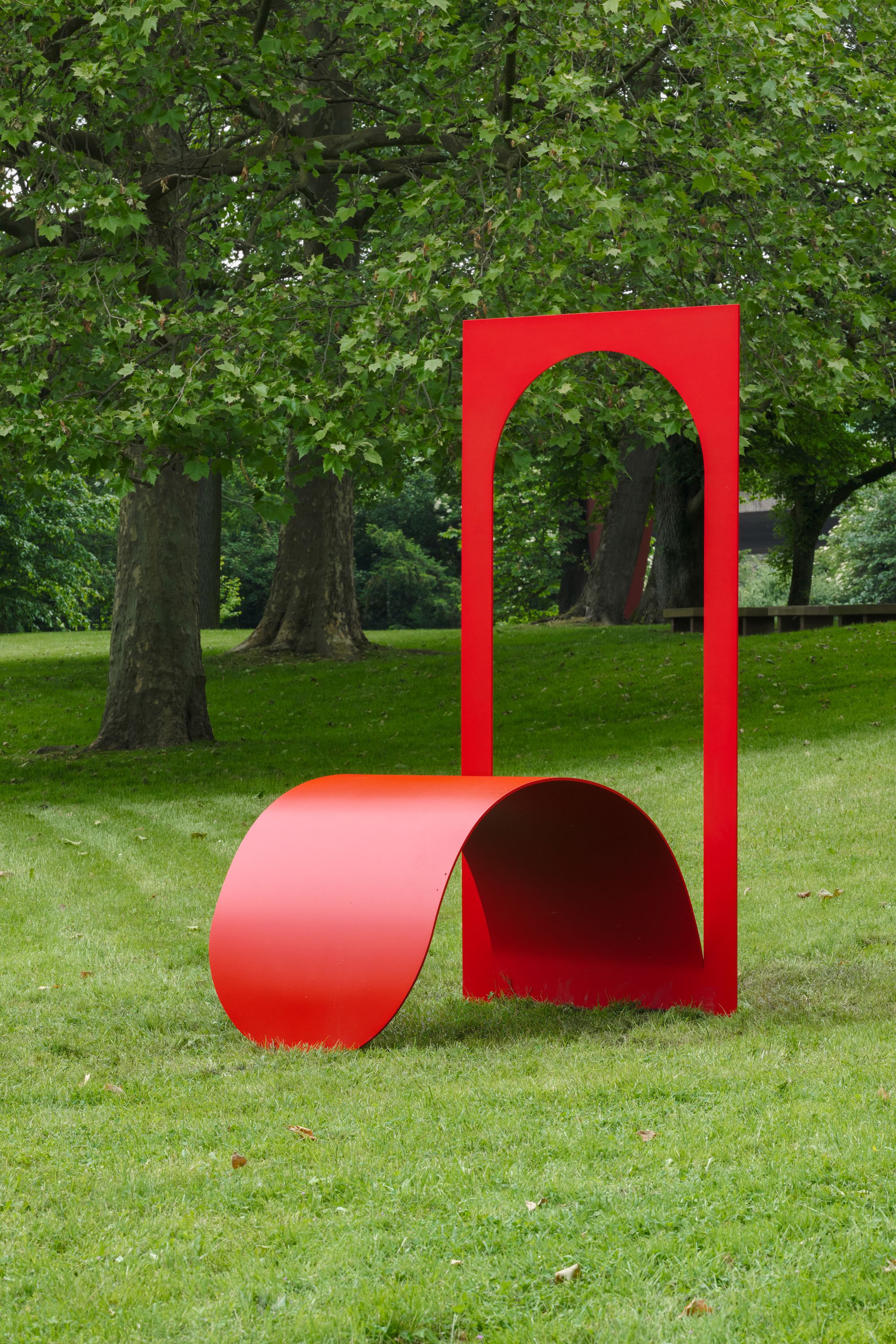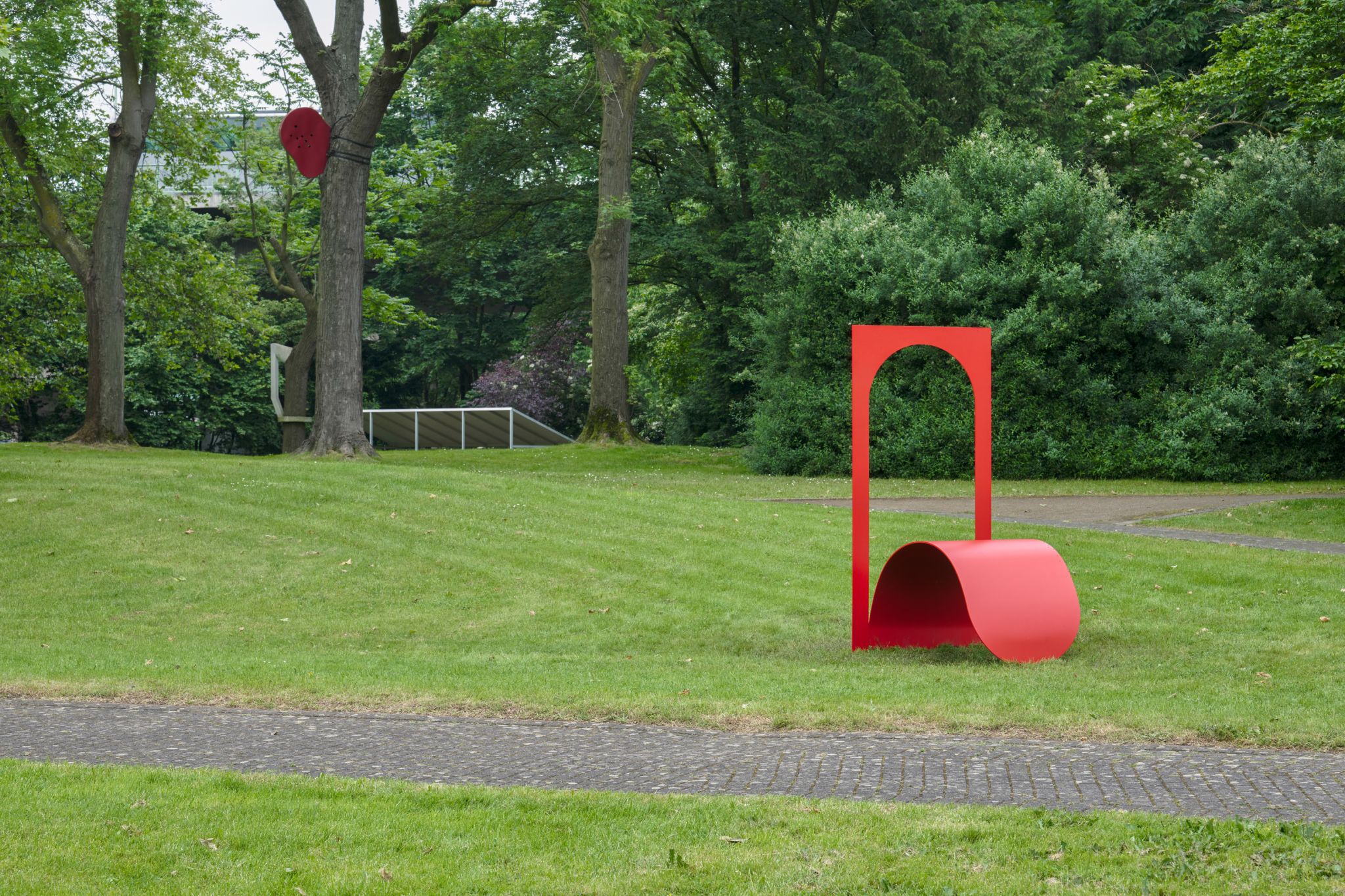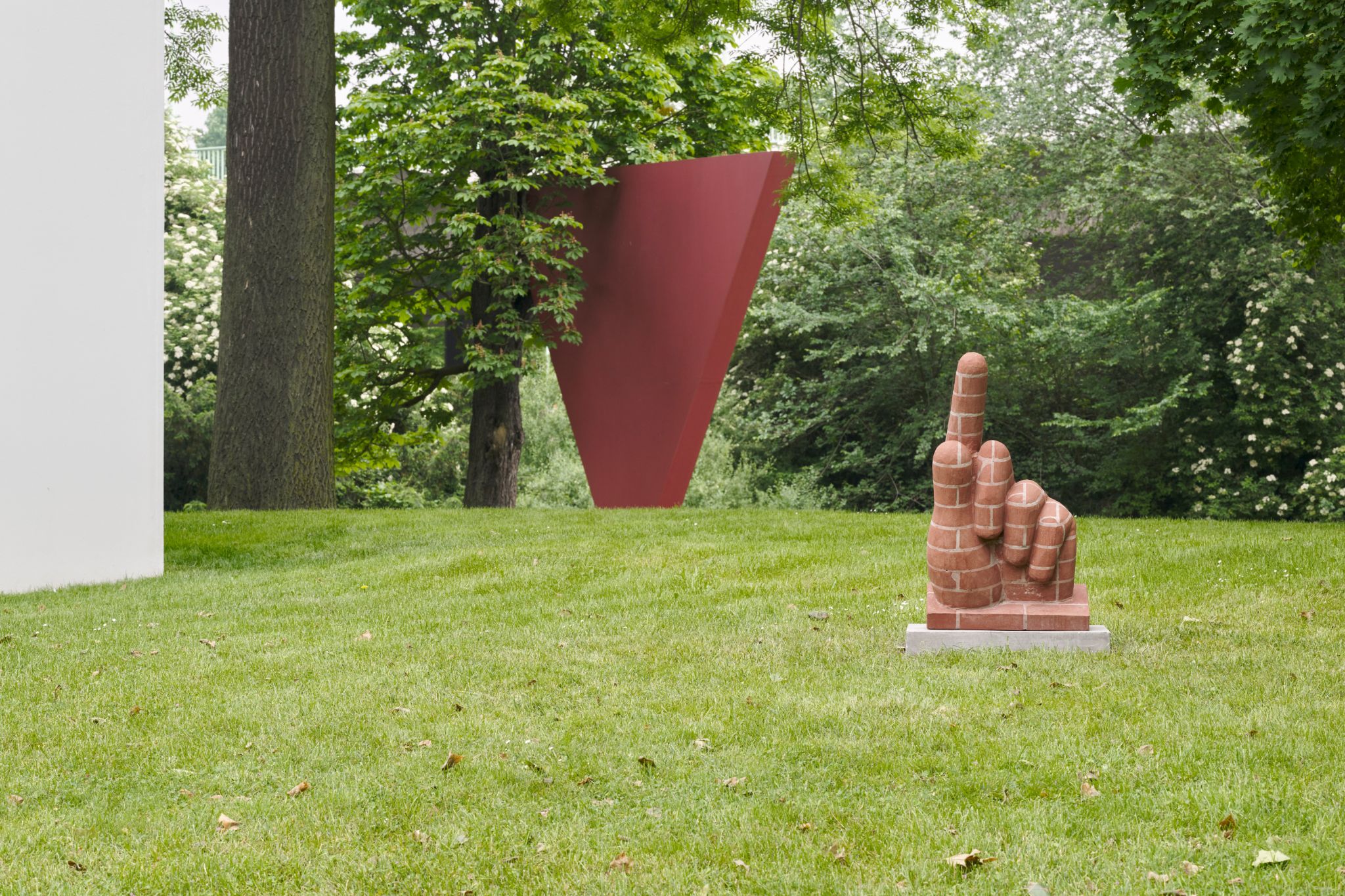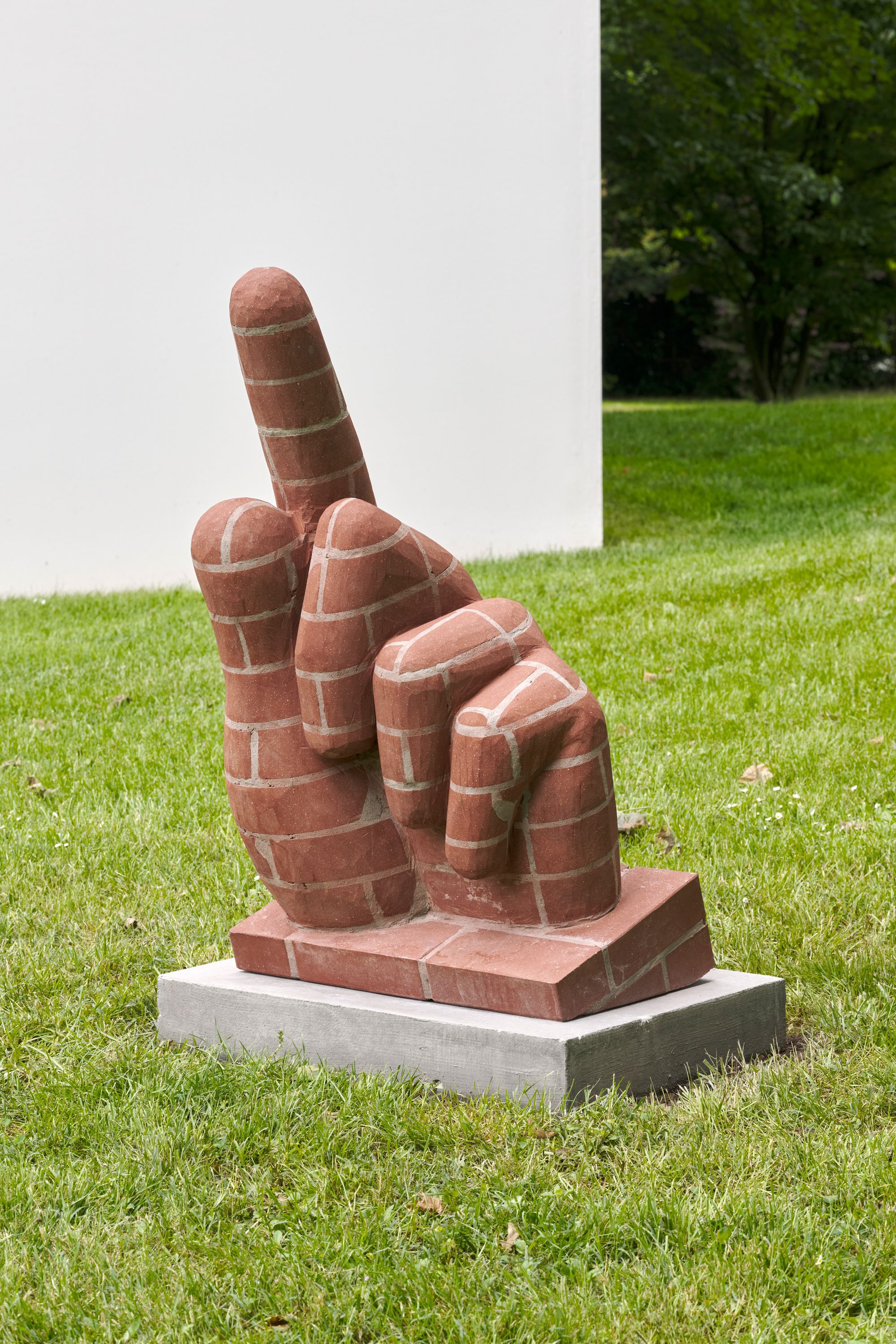-
Gardens or parks like the Skulpturenpark Köln are carefully organised sections of nature in which forms, rhythms and colours form a harmonious yet contrasting and stylistically varying whole by means of elements like trees, shrubs, stones and lawns. Visitors are led along paths to experience a balanced place, rich in details, unfolding in time and space. Nuances of seasonally changing atmospheres are captured in the interplay of light and shadow.
read moreThis forms the background for the 11th edition of KölnSkulptur, along with the park’s permanently installed sculptures and buildings, which have coalesced into a whole over the years. The presentation marks a range of positions between the monumental and the ephemeral, and in doing so takes important developments in contemporary art into account. We encounter globally relevant issues such as technological developments in the area of artificial intelligence, the impact of climate change, current challenges faced by democratic institutions or the rise of new economies in works specially made for KölnSkulptur by eight contemporary artists. In different ways they reflect and formulate approaches to art, nature and the future at a time of global uncertainty and crisis.
The urban setting is an obvious starting point for artistic work processes. It is perceived as a place of social interaction in which people, time and the particular characteristics of the location combine in an essential way with the experience of open-air sculptures. Here, where environmental effects can be experienced very directly by each individual – more so than in the enclosed, sheltered spaces of a museum, for example – the impact of various natural, cultural and social forces on the body becomes the overall theme of the exhibition.
The invited artists direct their gaze outward in an invitation, through their objects and proposals, to experience art as a kind of fertile ground for experimenting with boundaries that also show up the fragility and vulnerability of every organism. Their works are based on the understanding that the world as we know it is being fundamentally changed by science and technology. This in turn influences what it means to be human and how the conditions of a body might appear in the context of human capital. The works reflect transformations within cultural narratives, particularly how historical processes and individual recollection affect the body and the collective memory.
The body should not therefore be considered solely in its biological self-evidence; as a central social ‘organ’ it refers both to naturalness and to artificiality, and it also has a fictional character as the abstraction of various social narratives and realities. Many of the sculptures extend the conventional definition of their medium as a permanent fixed form and presence in space and time by going beyond the usual standard of a self-contained body and sometimes incorporating unusual materials. They range from the subtle to the colossal, from scattered to monolithic, from performative hybrid forms to the medium of film.
[…]
Untitled (Tongue Rolling – Outdoor) is part of a series of oversized tongues in gleaming red steel, an allusion to architectural elements of Italian fascism, similarly found on the Palazzo della Civiltà Italiana in Rome, for example. The tongue as the human organ of communication, here portrayed in its basic form, is understood by the artist not only as a comment but also as a call to a lively discussion about the aesthetic, political and social meanings and preconditions of architecture.
Made of bricks, which are primarily used as building material in architecture, Untitled (Pointing Hand 3) contradicts its industrial material. The finger of this hand sculpture points in comic-book aesthetic at an indeterminate target, apparently drawing attention, through its cheerful prompting, to its human and non-human environment in the park. In the context of current debating culture, in which complex issues are often simplified, the monumental hand can be read as a call to adopt a different perspective.
Text: Nikola Dietrich
KölnSkulptur #11: Body Manoeuvres is curated by Nikola Dietrich. Artists: Olga Balema, Marte Eknæs, Julian Göthe, Judith Hopf, Paulina Olowska, Georgia Sagri, Frances Scholz, Peter Wächtler
Untitled (Tongue Rolling – Outdoor) was commissioned by Stiftung Skulpturenpark Köln and produced by Schlosserei Stephan Strobl.
Photos: Mareike Tocha © VG Bild-Kunst, Bonn, 2024, Stiftung Skulpturenpark Köln, 2024
Wednesday – Friday 12 – 6 pm
Saturday 12 – 4 pm and by appointment
-
Gardens or parks like the Skulpturenpark Köln are carefully organised sections of nature in which forms, rhythms and colours form a harmonious yet contrasting and stylistically varying whole by means of elements like trees, shrubs, stones and lawns. Visitors are led along paths to experience a balanced place, rich in details, unfolding in time and space. Nuances of seasonally changing atmospheres are captured in the interplay of light and shadow.
read more
Judith Hopf
Untitled (Tongue Rolling – Outdoor), 2024
Coated steel
240 × 114 × 152 cm
Judith Hopf
Untitled (Pointing Hand 3), 2017
Bricks, cement
104 × 61.5 × 38.5 cm
